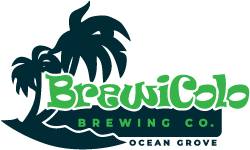Australians have a strange and strained relationship with dark beer.
Many Aussies have only ever heard of two before - a certain dark ale on tap in old Aussie pubs, and a stout that seems to exist only in Irish pubs.
Stouts and porters are the two most popular styles of dark beer. They’re certainly an acquired taste, just like coffee and dark chocolate are. But just as with coffee and dark chocolate, those who enjoy these dark beer styles find them irresistible.
What makes it a stout or porter?
Historically, porters and stouts are related. In the 1700s, robust dark brown ales became known as porters, since they were enjoyed by working-class London cargo carriers of the same name. When brewers started making stronger versions of the same style of beer, they referred to them as stout porters. Over the next three centuries, different brewers across different countries with different ingredients and methods available to them helped the styles to evolve with a range of variations.
It can be hard to believe that a big bitter stout or a smooth chocolatey porter is made with the same four ingredients as a light and bright lager (and most beer styles) - malt, hops, yeast, and water. But the key difference is in what kind of malts are used.
Caramel malt, chocolate malt, roasted malt, black malt, roast barley (which isn’t actually malted)… these all contribute the distinctive colours and flavours that make stouts and porters what they are. For the most part, the dominant flavours of these beers come from these malts rather than the yeast or hops in the recipe (though American stouts can be designed to show off hop flavours).
What should you expect?
It’s common for porters to be a little lighter in colour (perhaps dark brown with a ruby tint), and to lean towards the smooth chocolate and caramel end of the dark beer spectrum. Stouts are generally darker (black, or close to it) and may be more bitter, with flavours described as dark chocolate, coffee and roasty (think dark toast).
Do you need to know the difference between the two? Not really. Some brewers will insist there’s a clear difference, while others will say they’re basically the same thing. Sometimes a brewer will brew a dark beer and then decide whether to call it a porter or a stout based on the flavour, which illustrates that the difference can be negligible even in a brewer’s mind.
Even within porters and stouts there can be a range of flavours, so it’s best to hear how each beer is described. One porter may boast nutty, caramel and toffee flavours, while the label on another tells of flavours like a chocolate biscuit. Based on the malts and the brewing process, a stout could be dry and roasty with a hint of espresso, or sweet and strong like coffee mixed with cream and sugar, or could taste like liquorice and molasses and bitter cocoa.
Some brewers also add other ingredients - lactose, an unfermentable sugar, makes for a thicker feel in the mouth and a sweeter taste; chocolate or coffee can be added to further boost a dark beer’s characteristics; and then there’s vanilla, fruit, nuts, smoked malts…
When you enter the world of dark beer, you’ll find there’s always more to explore.
Dark Ale

-
Flavour ProfileHopsMalt
- Smooth / Velvety
Tasting notesSmoke, chocolate and coffee -
Flavour ProfileHopsMalt
- Creamy
Tasting notesIt's rich and roasty!






